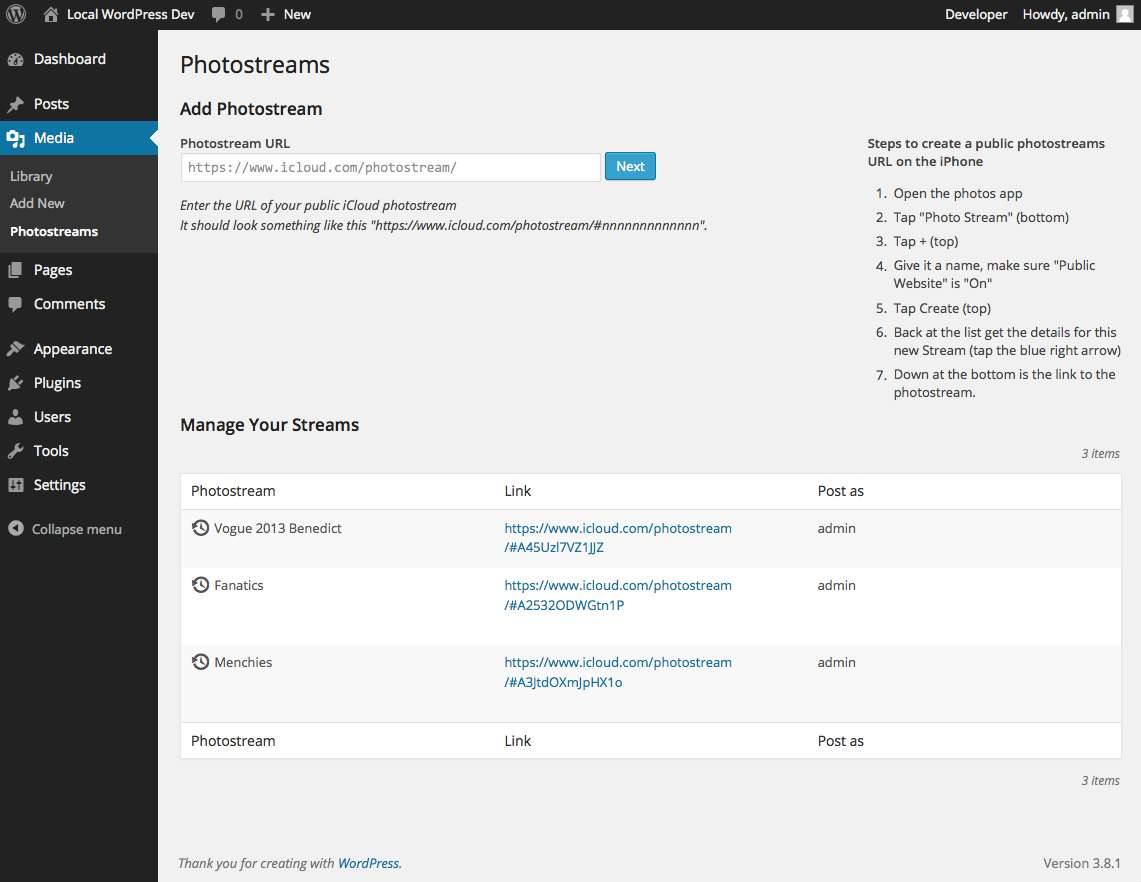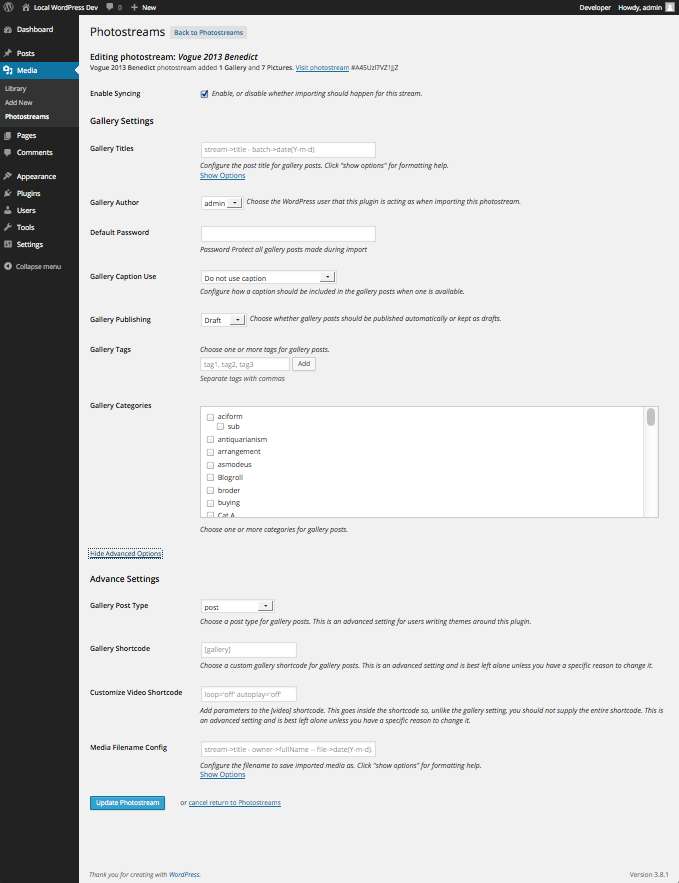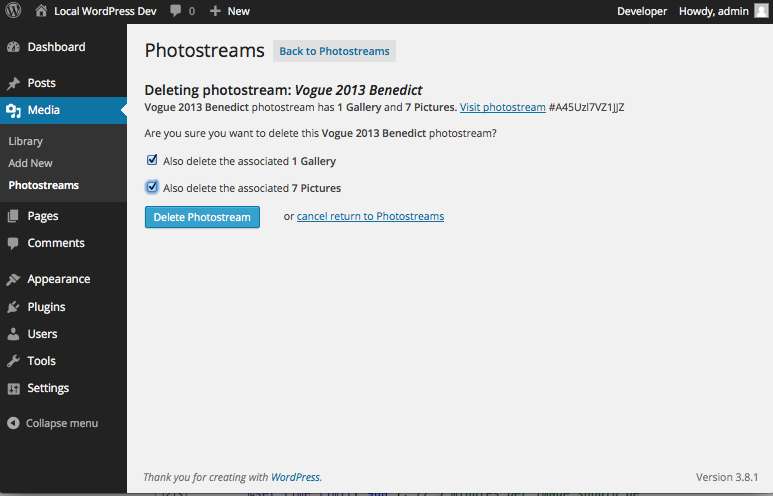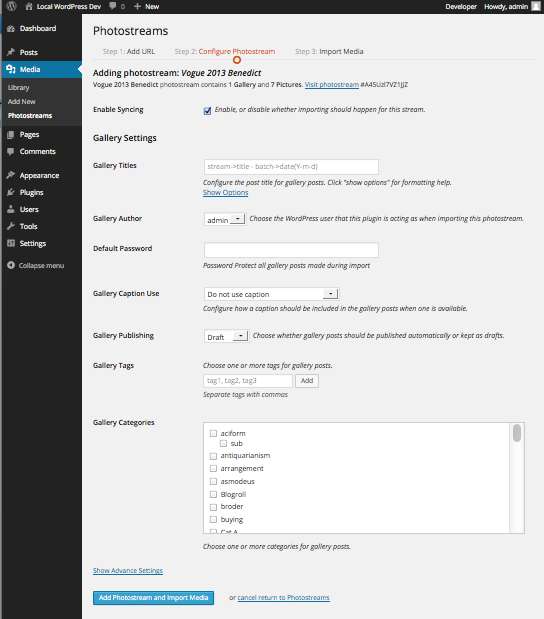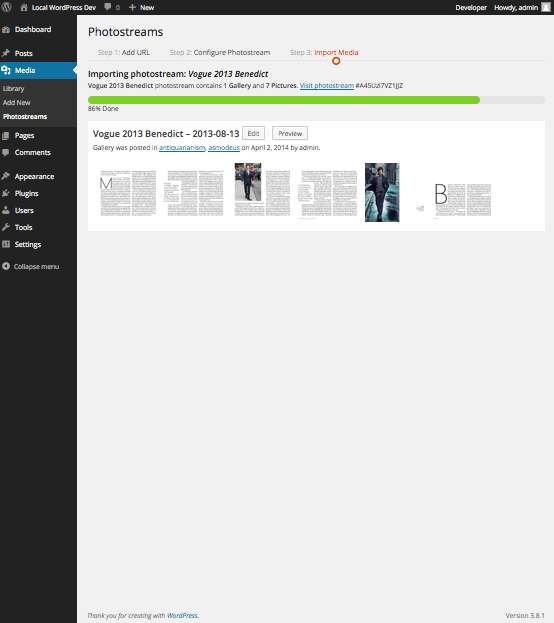Description
Lets say, for the sake of argument that you have something like an iPhone. And you use it to take pictures. You sure wish there was an easy way to be able to set up a WordPress blog as a photoblog automatically. Now you can. The Photo Stream iCloud feature is just for this kind of task. You can sync to your iPhoto app, you can share to your friends, and even your TV. Now with this plugin you can have your WordPress blog automatically discover new photos shared from your iOS device and import them.
Just set up a Photo Stream. Configure it so that it has a “Public Web Site”. And this plugin will take care of the rest for you.
- Shared a group of photos all at once? This plugin automatically makes a gallery post containing all the photos you shared together.
- Did you add a comment to your shared photos? This plugin will automatcially add your text to the gallery post.
- Don’t like the idea of just anybody seeing your pictures? You can Password protect your posts
- Do you want to edit, rename, and curate your posts before they go live? You can have the plugin just make draft posts waiting for you to jazz them up
- Are you a theme or plugin developer? Use custom post types, tags, categories, and automatically indexed EXIF metadata from the photos to make an amazing photoblog.
- Don’t want to sit there clicking buttons to make photos show up? This plugin uses WordPress scheduled work functionality to gradually import photos without needing your help.
How this works in relation to iCloud
Warning: This section is pretty hardcore
iCloud publishes a JSON endpoint for its Photo Streams. This endpoint has a list of photos (but not urls for the photos) and data about them (like what group they belong to, who posted them, etc.) That endpoint gives you enough information to make an HTTP POST request to another URL at which you can find enough information to build the image fetch URLS. The data is only good for a limited amount of time (the urls that you build with this expire) and so it is necessary that you build this fresh when you’re going to use it. This is also why you can’t just import a list of photo urls and call it a day. Finally you can make a final HTTP request per image to get the data.
Essentially this plugin just does what your web browser would do if you visited the public photostream link.
I have not looked further into how likes, and additional comments on photos are stored. The data must be in there.
For theme developers
For theme developers there’s not much to know. You can specify any cats, or tags, you desire for a photostream. You can also specify custom post types. So you have a lot of flexibility. Finally, if the PHP Exif extension is installed and active ( http://www.php.net/exif ), then the plugin stores all EXIF metadata that if finds as postmeta data for the image attachment itself. For example:
- ps_exif_Make => Apple
- ps_exif_Model => iPhone 4S
- ps_exif_XResolution => 72/1
- ps_exif_YResolution => 72/1
- ps_exif_ResolutionUnit => 2
To Do List
- Logging (via custom post type, I think)
- Error reporting, and handling (probably also via custom post type)
- Add history/post/image listing to stream pages (essentially an activity log)
- Add feedback for “dev mode” process now clicks
- Make some of the dev mode things just things people can do (force-process stream, for example)
- Add images captions/notes/whatever to gallery posts as text (when you push a group of photos to a stream you can supply text)
- See about importing comments as comments on the gallery with reference to the specific image (people can comment and like your photos)
- Work within PHPs time limits (Fatal error, time limit of %d seconds exceeded)
- uninstaller
- Add cats from the add/manage section of the admin UI

